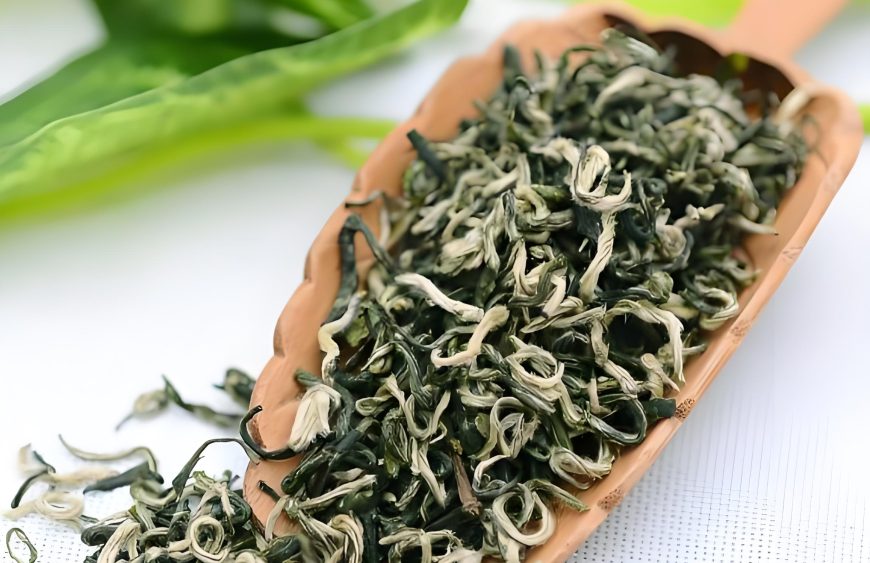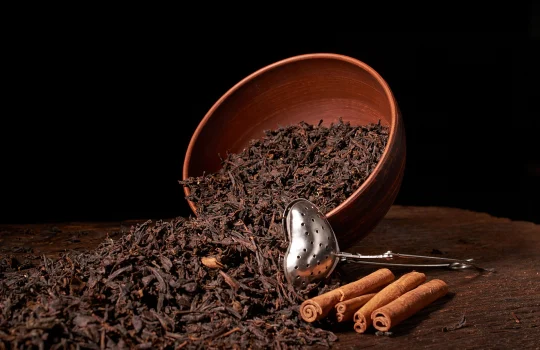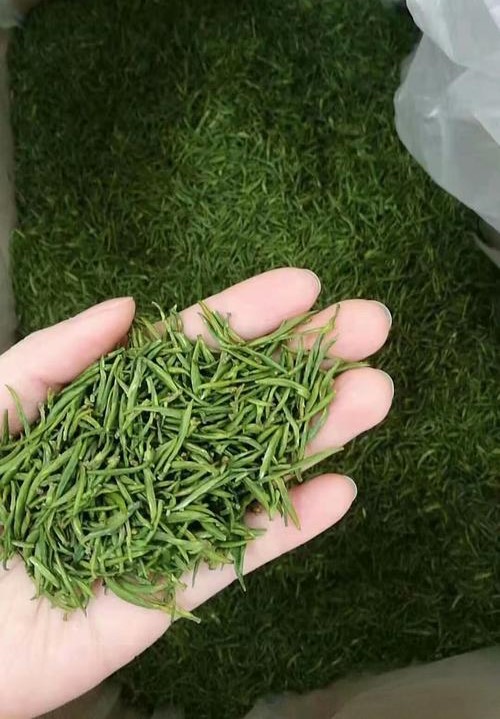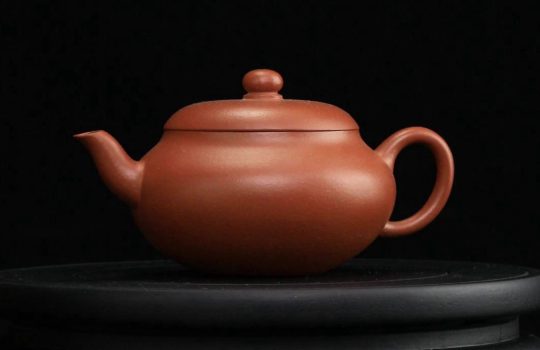Duyun Maojian Origin: The areas of Tuanshan, Shaojiao, and Dacuo in Duyun City, Guizhou Province
Quality Characteristics: Dry tea: Uniform in shape, with curly, slender leaves covered in white downy hairs, and a jade-green colour.
Tea liquor: Yellow-green and bright.
Taste: Mellow, fresh, and rich, with a sweet aftertaste.
Detailed Introduction to Duyun Maojian
Duyun Maojian is one of the three famous teas of Guizhou Province and one of the ten famous teas of China. According to historical records, as early as the Ming Dynasty, the fish hook tea and sparrow’s tongue tea produced in Duyun were listed as tribute teas. By the Qianlong period, they were already exported overseas. At the 1915 Panama-Pacific International Exposition, Duyun Maojian tea won the Excellence Award. At the same time, due to its excellent quality, it has been praised as ‘comparable in shape to Taihu Biluochun and in quality to Xinyang Maojian.’ Tea master Zhuang Wanfang also praised it with the verse: ‘Snow buds fragrantly grow in Duyun, no less than Longjing and Biluochun.’
Tasting Experience of Duyun Maojian
The aroma is fresh and fragrant, the taste is rich and mellow, and the aftertaste is sweet.
Shape Description of Duyun Maojian
Appearance: Duyun Maojian tea has a curled, spiral shape with abundant white downy hairs, a lustrous green colour, and is made from local tea varieties known for early budding, robust buds and leaves, abundant downy hairs, and strong tenderness retention. Inferior Duyun Maojian has inconsistent sizes and does not meet the above characteristics. Tea liquor colour: Duyun Maojian is renowned for its ‘three greens and three yellows’ characteristic: ‘dry tea with a greenish-yellow hue, tea liquor with a greenish-yellow hue, and tea leaves with a greenish-yellow hue.’ Therefore, premium-grade Duyun Maojian finished tea has a lustrous appearance, fresh aroma, rich flavour, and sweet aftertaste. Counterfeit products often lose their flavour after the first infusion.
The benefits of Duyun Maojian
Duyun Maojian contains abundant proteins, amino acids, alkaloids, tea polyphenols, sugars, organic acids, aromatic substances, various vitamins, and water-soluble minerals. It has multiple functions, including quenching thirst, clearing the mind and improving vision, refreshing the mind, aiding digestion, inhibiting atherosclerosis, preventing cancer, treating scurvy, and resisting radioactive elements.
Brewing Techniques for Duyun Maojian
Duyun Maojian tea is prized for its vibrant green colour, fresh aroma, and crisp, sweet taste. While the brewing process may seem simple, it actually requires careful attention to detail. Since Duyun Maojian is an unfermented tea that retains the essential characteristics of tea leaves, even slight deviations in brewing can cause the leaves to become oversteeped and lose their freshness, resulting in a dull tea liquor with a muted aroma. Therefore, mastering the key steps—water quality, water temperature, tea quantity, and tea ware—is essential to brewing a perfect cup of tea.
The Story and Origin of Duyun Maojian
In ancient times, the King of Duyun had nine sons and nine daughters. One day, the old king suddenly fell ill. He summoned his children to his bedside and said, ‘Whoever finds the medicine to cure my illness shall inherit the throne.’ Later, the nine sons found nine different medicines, but none of them cured the king’s illness. However, the nine daughters all found the same medicine—tea leaves—which miraculously cured the king’s illness. The king asked, ‘Where did you find it? Who gave it to you?’ The daughters answered in unison, ‘We picked it from Mount Yunwu, and it was given to us by the Green Fairy Bird.’ The king took it three times, and his eyes grew bright and his spirit revived. He exclaimed joyfully, ‘It’s more effective than any elixir! Now I will cede the throne to you, but I have one wish: please find some tea seeds to plant. In the future, whoever falls ill can be cured—wouldn’t that be even better?’ The next day, the girls went to the Cloud Mist Mountain but did not see the Green Fairy Sparrow and did not know how to plant tea trees. So they knelt under a tea tree for three days and three nights, and their devotion moved the heavenly gods. The heavenly gods then sent a Green Fairy Sparrow, who transformed into a tea maiden and taught them the method. The girls obtained the tea seeds and returned to Duyun. In the first year, they planted the seeds on the summit of Mengshan Mountain, but they were withered by hail; in the second year, they planted them on the mid-slope of Mengshan Mountain, but they were frozen to death by frost and snow; in the third year, they planted them at the foot of Mengshan Mountain. Through careful cultivation and meticulous management, they soon became a lush tea garden. To express gratitude for the Green Fairy Sparrow’s guidance, they named it ‘Duyun Maojian Tea.’




